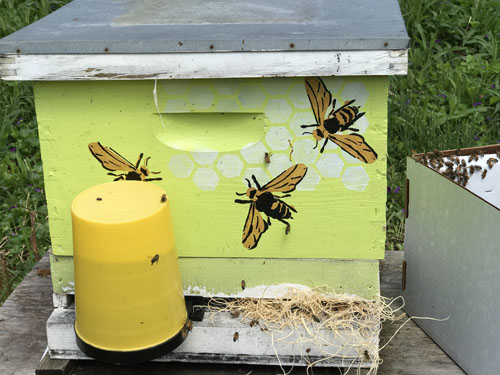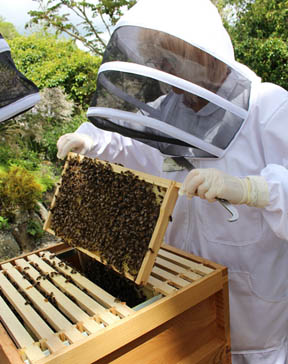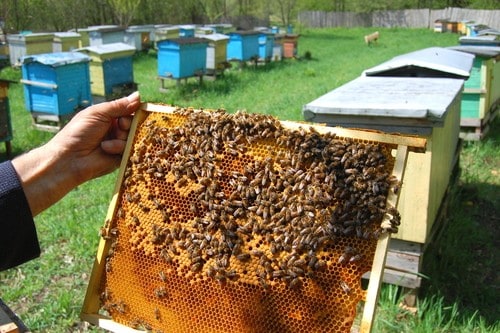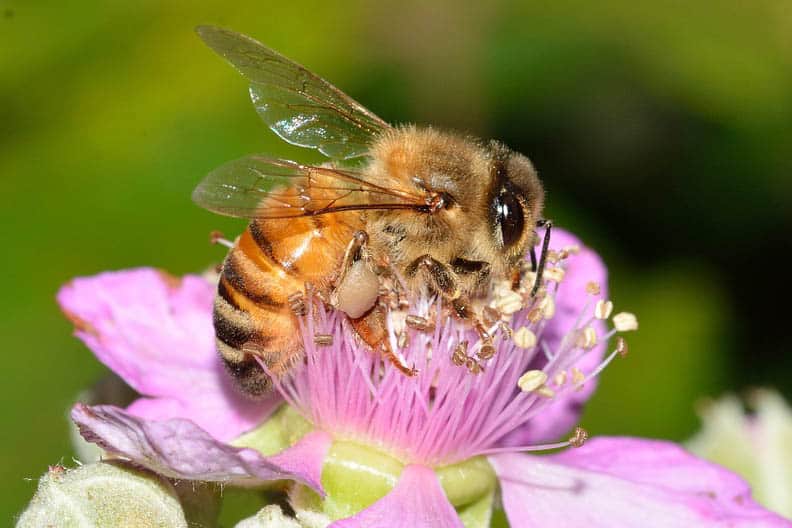
It’s OK to admit it. You are wondering how to start beekeeping.
You have been thinking about beekeeping for a long time. You’ve seen other people keeping bees. You’ve watched other beginners get into the beekeeping hobby. But you continue to put off beekeeping for another time when you are less stressed and busy.

If this sounds like you, it’s time for you to follow your inner buzz. It’s time to start keeping bees and become a actual beekeeper. Now is the perfect time to get your equipment and order your bees.
How to Start Beekeeping
Even beginners know that you can’t be a beekeeper unless you have bees. That means placing an order for the buzzing little bees that will be the beating heart of your beehive. Suppliers of bees are very busy taking orders for beekeeping packages in early Spring. In fact, most suppliers run out of bees by March. So, if you procrastinate too long, you may have to wait another year to make this decision.

Another possibility is to buy a split (a hive divided into two) from a nearby beekeeper. Sometimes beekeepers need to split existing hives, but that typically happens during the summer months. And honestly, the odds of that happening nearby are unlikely.
How Much Does It Cost to Start Beekeeping?
A starter kit with two deep hive boxes, a few basic tools, a bee veil and a bee helmet (but no bee suit) will cost about $250. A basic package of three pounds of bees (that’s about 10,000 bees and a queen) costs between $110-$150 from a local bee supplier. Or you can order online and receive them via the postal service. The disadvantage to a bee package is you won’t harvest any honey the first year.
Another option is a nucleus hive or ‘nuc.’ A ‘nuc’ is a four- or five-frame miniature beehive that comes with a working/laying queen. This will set you back $200 or more. This is the way I recommend getting started, because it gives you a jump start on the beekeeping season.

Another cost is a bee suit. I go the cheap way and buy a white painting suit from a local big box store for about $12. This option lasts me one complete season. Then I throw it away. Another cost is granulated sugar for feeding your bees in the early spring and fall when very little nectar is available for foraging. This costs me around $75 per season for two hives. So the total cost for two hives with two nucs is about $1,000. To cut costs, you could start with one hive with a package, and cuts the cost in half.
Those of you who are avid online shoppers won’t be surprised to learn that Amazon.com is a great place to shop for a wide range of beekeeping supplies. Click here to check out the Beekeeping Supplies on Natural Apiary and Beekeeping Supplies on Amazon. (Home Garden and Homestead receives a small commission from the sales we generate. Thank you!)
The Best Location for Your Beehive
Hives should be placed in a location with early morning sun and afternoon shade. The area should be easy to maneuver around. An area that you can see from your house is preferable, but not essential.
A nearby source of water is required. This water source can be a pond or a small bird bath with floating bark for bees to land on. Many people don’t realize that bees need a water source to survive. Also required are flowers. Good floral sources around the hives are needed for your colony to thrive.
The Beekeeping Calendar
The most frequently asked questions I get about beekeeping revolve around the beekeeping calendar. Springtime is when you will spend the most time with setting up and cleaning equipment. It’s the time of year for installing your bees, mixing up sugar and water to fill feeders, and opening and inspecting your hives several times a month.

Go Ahead—Start Beekeeping
So, if you are still thinking about jumping into beekeeping, this is the perfect time. I have made lots of beekeeping friends along the way, and it is a rewarding and interesting hobby. After you buy your equipment, the costs go way down. Harvesting beneficial honey is my greatest delight, and my vegetable garden and flowers benefit from the natural pollination efforts of my honeybees.

When I look out at my hives, it gives me a great feeling of helping the environment as well creating natural habitat. I am forever joyful that, many years ago when I wondered how to start beekeeping, I decided to follow my inner buzz.
Ready for more information about keeping bees? Read Claire’s story Top 10 Tips for Keeping Bees



I WOULD LIKE TO PURCHASE A QUEEN BEE PLUS BEES FOR THE BEE HIVE THAT I HAVE IN MY BACK GARDEN. THANK YOU JOHN WILKINSON
Hi John, and thanks for your comment. Purchasing bees is fairly easy in the Internet age. Just do a Google search for “buy queen bee and worker bees” and also add in your location. (If you’re in the UK, you probably don’t want to buy bees from the US.) There are lots of reputable bee suppliers. Check the reviews of the vendors you are considering before you make your purchase. Happy beekeeping!